Dehumidifiers are essential devices that help regulate indoor humidity levels, creating healthier and more comfortable living environments. This blog post will explore the fundamental mechanics of how dehumidifiers function, breaking down the technology and processes involved. We’ll also discuss their critical role in reducing moisture-related issues, such as mold growth, allergens, and structural damage. Whether you’re considering purchasing a dehumidifier or simply curious about their operation, this guide offers a comprehensive overview, ensuring you understand both the science and the benefits behind these innovative appliances.
What is a Dehumidifier and How Does it Work?
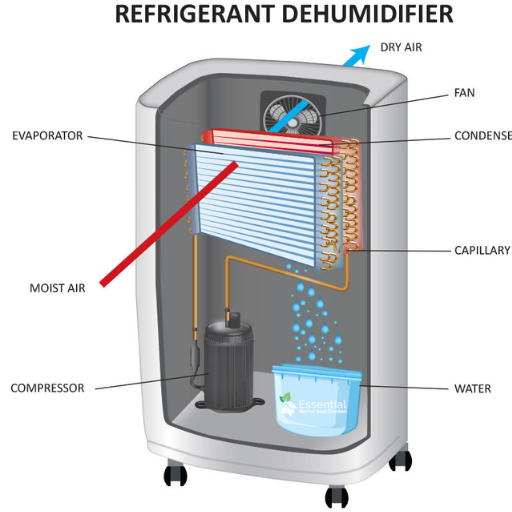
A dehumidifier is a household appliance designed to control humidity levels by removing excess moisture from the air. It works by drawing in air through a fan, passing it over chilled coils where the moisture condenses into water droplets. This water is collected in a tank or drained away, and the dry air is then expelled back into the room. Some dehumidifiers use desiccant materials to absorb moisture, especially in lower temperatures. By maintaining optimal humidity levels—typically between 30% and 50%—dehumidifiers help prevent mold, mildew, and allergens while protecting your home’s structure and improving overall air quality.
Understanding the Basics of a Dehumidifier
Dehumidifiers offer a wide range of benefits for both residential and commercial environments by regulating humidity levels. First and foremost, they help prevent the growth of mold and mildew, which thrive in damp conditions and can pose health risks. By reducing excess moisture, dehumidifiers also minimize allergens such as dust mites, creating a healthier indoor environment for those with allergies or respiratory issues. Additionally, these devices protect furniture, wood flooring, and walls from damage caused by excess humidity, such as warping and rotting. Another key advantage is their ability to improve indoor comfort, reducing that sticky, damp feeling during humid weather. Furthermore, by maintaining optimal humidity levels, they reduce the strain on HVAC systems, resulting in greater energy efficiency and potential cost savings. With various sizes and types available, dehumidifiers can be tailored to meet specific needs, making them versatile tools for maintaining a healthy and comfortable home or workspace.
How Dehumidifier Work Removes Moisture from the Air
The working process of a dehumidifier starts with the machine pulling in air from the warm and humid environment. The hot humid air is passed through a machine which contains coils, and the air is made to flow over cold coils, where moisture condenses into water droplets. Water droplets that condense either collect in a reservoir or drip out through a drain hose. The cooled air has to be reheated to be released into the room, and will be drier in comparison to the air that is in the room, which helps lower the humidity level. This works efficiently in terms of energy consumption and assists in cooling the area for living or working by preventing mold or dampness issues.
The Role of Coils and Condensation in a Dehumidifier
Coils in a dehumidifier form an intricate part of the system since they cool the incoming air and aid in condensation. When warm, moist air enters dehumidifier, it is passed over the refrigerated coils. These coils further cool the air until its temperature reaches the dew point; the vapor condenses to water droplets. The refriged coils store the moisture in a tank, drain it externally, or send it outside. Dehumidifier reheats this air using warm coils and releases it back into the environment. In this way, the device lowers the humidity levels indoors efficiently, reducing mold, mildew, and dampness problems while improving comfort and health.
Why Do You Need a Dehumidifier?
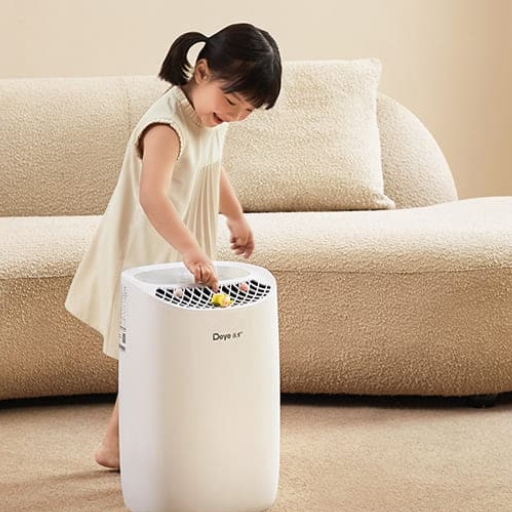
Excess humidity in indoor spaces can lead to a variety of issues that affect both health and home quality. High levels of moisture promote the growth of mold and mildew, which can trigger allergies or respiratory problems. Damp conditions can also damage furniture, walls, and flooring, causing costly repairs over time. A dehumidifier helps to control humidity levels, preventing these problems while improving air quality and creating a more comfortable living environment.
Signs of High Humidity in Your Home
Firstly, condensation on mirrors and windows is a tell-tale indicator of high humidity levels, especially in the mornings. Moreover, rooms, closets, and basements tend to have that damp and musty odor because of moisture. One other thing that can be eye-catching is the actual presence of mold or mildew on walls, ceilings, and fabrics. If you are feeling clammy and sticky indoors that is another indicator. Lastly, if wooden floorboards and furniture are beginning to warp and crack then this is a sign that there is excessive moisture in the air. If any of these symptoms are present and possible, it is important that the hazards are dealt with in order to maintain your health along with protecting your home.
How Excess Moisture in the Air Affects Health and Comfort
Having excess moisture or high humidity levels can negatively affect both health and comfort of individuals within a space. Warm, humid air is a breeding ground for mold, mildew, and other critters that sensitive people can inhale as they release spores and other allergens, aggravating asthma and respiratory issues. Beyond moisture mildew, warm humid areas often become a breeding ground for dust mites which are known to be common allergens. Most importantly, high levels of humidity often leave air feeling damp and sticky while disrupting sleep patterns. Stagnant sweat in humid environments can lead to skin irritations and overheating. Feeling discomfort in hot humid conditions can be detrimental in the long run as it can lead to fatigue and increased discomfort. Controlling dampness and humidity is therefore critical in ensuring a pleasant indoor environment.
Comparing Dehumidifier with an Air Conditioner
When comparing a dehumidifier with an air conditioner, I’ve learned that both devices serve distinct purposes but can overlap in functionality. A dehumidifier is specifically designed to remove excess moisture from the air, helping to maintain ideal indoor humidity levels and prevent issues like mold growth or dampness. On the other hand, an air conditioner primarily cools the air, with humidity reduction being a secondary effect during the cooling process. If my goal is to target high humidity without needing to lower the temperature significantly, I’d opt for a dehumidifier. However, for cooling a space while simultaneously reducing moisture, an air conditioner can be more effective. Essentially, the choice depends on whether I prioritize humidity control, cooling, or both combined.
How to Choose the Right Kind of Dehumidifier for Your Home
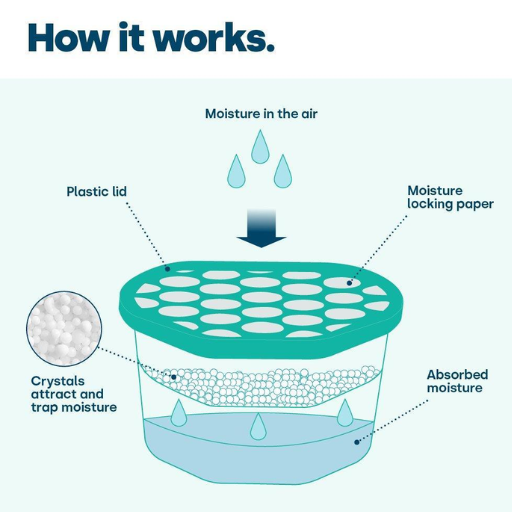
To choose the right dehumidifier for your home, start by assessing the size of the space and the level of humidity. For smaller spaces or areas with mild dampness, a portable dehumidifier with a lower capacity (around 30 pints) may suffice. For larger spaces or extreme moisture issues, a whole-house dehumidifier or a high-capacity unit (50+ pints) is ideal. Consider features like built-in humidistats for automatic humidity control, energy efficiency ratings to save on power, and ease of maintenance, such as accessible filters and a manageable water tank. Additionally, think about the specific placement—basements often require more powerful units due to poor ventilation. Choose a model appropriate for your local climate and the degree of humidity you face for optimal results.
Understanding Different Types: Portable Dehumidifier vs. Whole-house Dehumidifiers
When deciding between portable dehumidifiers and whole-house dehumidifiers, it’s important to consider your specific needs. Portable dehumidifiers are standalone units, best suited for targeting moisture in individual rooms or smaller areas. They are cost-effective, easy to move, and simple to set up, but they require regular maintenance, such as emptying water tanks or cleaning filters.
On the other hand, whole-house dehumidifiers integrate with your HVAC system to manage humidity levels across your entire home. These models are ideal for larger spaces, offering consistent results with minimal upkeep once installed. However, they come with higher upfront costs and may require professional installation.
Choosing the right type depends on factors like the size of the space, the level of humidity, and your budget. If you need flexibility and affordability, a portable unit may suffice. For comprehensive humidity control with less manual effort, a whole-house system is a more efficient, long-term solution.
Factors to Consider When You Buy a Dehumidifier
When purchasing a dehumidifier, it’s essential to evaluate factors such as capacity, energy efficiency, and noise levels. The size or capacity of the machine should align with the space’s square footage and humidity level. Small-capacity units work well for single rooms or areas under 500 square feet, while larger-capacity models are ideal for basements or bigger spaces with higher humidity.
Energy efficiency is another critical consideration, as dehumidifiers can contribute to higher electricity costs. Look for units with Energy Star certification to save on energy consumption over time. Additionally, consider noise levels, especially if the unit will be placed in bedrooms or living spaces. Many modern dehumidifiers feature quieter operation and adjustable fan speeds, making them suitable for noise-sensitive environments.
Other factors include the type of drainage system, such as manual removal of water tanks versus using a continuous drainage hose, and advanced features like built-in humidistats, timers, or auto-restart functions after a power outage. Assess your specific needs to select a dehumidifier that balances performance, convenience, and cost-effectiveness.
The Importance of Capacity and Efficiency in Dehumidifier You Choose
When selecting a dehumidifier, I prioritize capacity because it determines how much moisture the device can remove from the air in a day. For smaller spaces like bedrooms, a unit with a lower capacity may suffice, while for larger or more humid areas, a higher-capacity dehumidifier is essential to maintain a comfortable environment. Efficiency is equally important to me, as it impacts energy consumption and overall cost-effectiveness. I look for models with Energy Star certification, as they operate more efficiently without compromising performance. By balancing these two factors, I ensure that my dehumidifier meets both my practical requirements and budget.
Using a Dehumidifier Effectively
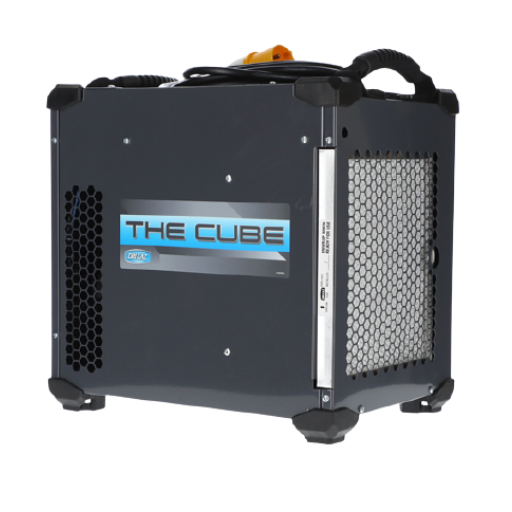
The first step for efficient dehumidifier use is to properly set its capacity according to the area and specific needs. For small rooms or areas, lower capacity units should suffice. To ensure proper airflow around the dehumidifier, it should be placed in the middle of the room. Specifically, windows and basement areas that experience dampness are optimal for placement. To improve efficiency, windows and doors should be closed for the duration of the dehumidifier’s operation. For models that allow it, manually emptying the reservoir or installing flexible drainage systems is ideal. Also, according to the device’s specifications, the filter should be changed periodically. Utilizing a hygrometer to check the humidity level allows you to set the preferred comfort level.
Best Practices for Using a Dehumidifier in Your Home
Setting the Right Humidity Level
To maximize the effectiveness of your dehumidifier, aim for a humidity level of 30-50% in most indoor spaces. This range helps prevent mold growth, dust mites, and structural damage while maintaining a comfortable environment. Use a hygrometer to check humidity levels periodically and adjust your dehumidifier settings accordingly.
Ideal Placement for Dehumidifiers
Place the dehumidifier in the area with the highest humidity, such as basements, bathrooms, or near windows prone to condensation. Position it away from walls and furniture to allow proper airflow, ideally with 6-12 inches of clearance on all sides. Keep doors and windows closed for better efficiency while the unit is running.
Maintenance and Cleaning Tips
To keep your dehumidifier running smoothly, clean the filter at least once a month or as recommended by the manufacturer. Regularly empty the water reservoir, or if your unit supports it, connect it to a drain hose for continuous operation. Cleaning the reservoir with a mild detergent prevents mold and bacterial buildup.
Energy Efficiency Tips
Choose an Energy Star-rated model to save on energy costs and ensure eco-friendliness. Use the dehumidifier during high-humidity periods, such as rainy seasons or summer, rather than 24/7. Consider using a timer or built-in humidity control to shut off the device when the target level is achieved.
Maintenance Tips to Ensure Your Dehumidifier Works Optimally
Clean the Water Tank Regularly
To prevent mold and bacteria buildup, empty and clean the water tank at least once a week. Use warm, soapy water or a mild cleaning solution, ensuring no residues remain.
Inspect and Replace Filters
Check the air filter every few weeks to keep it free from dust and debris. Most dehumidifiers require filter replacement every few months, though the frequency may vary based on the manufacturer’s recommendations.
Keep Coils and Vents Clear
Dust and dirt can accumulate on the unit’s coils and vents, causing reduced efficiency or potential damage. Dust these areas gently with a soft cloth or vacuum every few months.
Position the Unit Properly
Place your dehumidifier in an open space away from walls and furniture to ensure unobstructed airflow. Maintain a minimum of 6-12 inches of clearance for optimal performance.
Monitor Humidity Levels
Use a hygrometer or the built-in control panel on your dehumidifier to maintain an ideal indoor humidity level between 30-50%. Adjust settings as needed to prevent under or over-dehumidification.
Check for Mineral Deposits
If you’re using your dehumidifier in hard water areas, mineral deposits can form inside the tank or on components. Clean these with a vinegar solution to avoid clogs or damage.
Inspect Power Supply and Cords
Ensure the power cord and connections are in good condition. Replace damaged cables immediately to avoid safety hazards or operational issues.
Operate Consistently When Needed
Sporadic use may not effectively manage humidity levels, especially in damp seasons. Run your dehumidifier consistently during high-humidity periods to maintain comfort.
By implementing these tips, you can extend the lifespan of your dehumidifier while keeping your home’s air cleaner and more comfortable year-round.
Common Mistakes When Using a Dehumidifier
Placing the Dehumidifier in the Wrong Location
Setting up your dehumidifier too close to walls or furniture can block airflow, reducing efficiency. Always position it in an open area for optimal moisture removal.
Ignoring the Filter
Many users forget to clean or replace the air filter regularly. A clogged filter forces the dehumidifier to work harder, affecting performance and increasing energy usage.
Not Emptying the Water Tank Frequently
Allowing the water tank to overflow or not clearing it promptly can lead to automatic shutoff, mold growth, or odors. Empty the tank as required and clean it regularly.
Using the Wrong Humidity Setting
Setting the humidity level too low can dry the air excessively, leading to discomfort and potential damage to furniture and wood surfaces. Keep it between 30–50% for healthy indoor air.
Not Accounting for Room Size
Using a dehumidifier that’s too small or too large for the space can waste energy and fail to control humidity effectively. Match the capacity of the dehumidifier with the dimensions of the room.
By avoiding these common pitfalls, you can maximize your dehumidifier’s efficiency, reduce energy consumption, and create a healthier living environment.
Benefits of Lower Humidity with a Dehumidifier
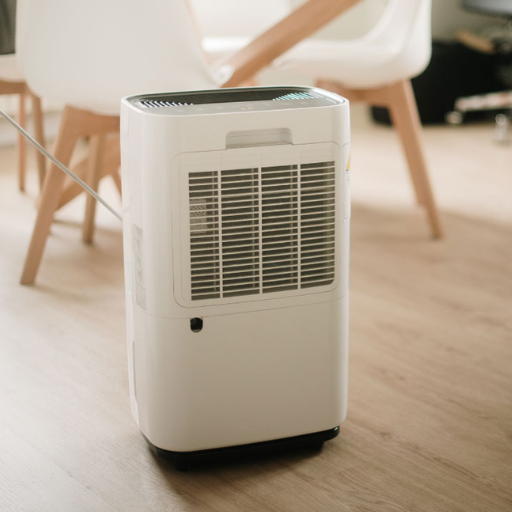
Lowering humidity with a dehumidifier provides numerous benefits for your home and health. Firstly, it helps prevent mold and mildew, which thrive in moist environments and can cause structural damage and health issues like allergies. Secondly, it reduces allergens such as dust mites, improving air quality and making it easier to breathe, especially for individuals with respiratory conditions. Additionally, maintaining optimal humidity protects wooden furniture, floors, and other sensitive materials from warping or cracking. Lastly, a balanced humidity level enhances comfort by reducing that sticky, damp feeling often associated with excessive moisture, creating a more enjoyable living atmosphere.
How a Dehumidifier Can Make Your Home More Comfortable
From my experience, a dehumidifier makes a noticeable difference in how comfortable a home feels. By pulling excess moisture from the air, it reduces that heavy, damp sensation, especially during humid seasons. It keeps the temperature feeling cooler without needing to lower the thermostat, which also helps save on energy costs. Beyond comfort, it prevents musty odors and stops mold and mildew from forming, making the air feel fresher. Plus, for anyone in my home with allergies, it has been invaluable in cutting down on triggers like dust mites. Overall, having a dehumidifier creates a cleaner, healthier, and much more pleasant living space.
Reducing Mold, Mildew, and Dust Mites with a Dehumidifier
High levels of humidity can promote the growth of mold, mildew, and dust mites, which have adverse effects on human health and may even damage property. Dehumidifiers help control indoor humidity levels to between 30-50%, a scope that suppresses the reproduction of mold and mildew. Moreover, controlling the humidity in a room reduces the amount of moisture in the air, which eliminates the conditions that dust mites survive in, thus greatly reducing the causes of allergies and asthma. Aside from controlling humidity, removing excess damp air also prevents musty smells occurring, and protects carpets, furniture, and walls from being damaged by moisture. Regular use of a dehumidifier and air purifier greatly improves the quality of air while also protecting the home from common household issues.
Improving Air Quality by Removing Excess Moisture from the Air
Excess moisture in the air can lead to a variety of problems, from promoting the growth of allergens like mold and dust mites to creating an environment for bacteria to thrive. By using a dehumidifier, you can effectively reduce indoor humidity levels, ensuring that the air in your home is cleaner and safer to breathe. Maintaining optimal humidity not only prevents the proliferation of harmful microbes but also reduces the risk of respiratory issues, such as allergies and asthma. Furthermore, removing excess moisture can enhance overall comfort by eliminating that sticky, damp feeling often associated with high humidity levels. A consistent approach to controlling indoor moisture contributes to healthier air quality, making your home a more comfortable and enjoyable environment for everyone.
References
Frequently Asked Questions (FAQ)
Q: What is the basic principle behind how a dehumidifier works?
A: At its core, a dehumidifier draws humidity out of the air by passing warm air over cold coils inside the dehumidifier. As the air cools, water vapor condenses into liquid, which the dehumidifier collects in a bucket or drains away.
Q: What are the common uses of a dehumidifier?
A: Dehumidifiers are commonly used to reduce relative humidity in homes, prevent water damage, and improve overall air quality. They are also employed in industrial settings to control moisture levels and in areas prone to high humidity.
Q: How does a home dehumidifier remove moisture from the air?
A: A home dehumidifier removes moisture by drawing warm, humid air into the unit where it passes over cooling coils. This process causes the water vapor in the air to condense, and the resulting water is collected in a bucket or drained away.
Q: What is the difference between compressor and desiccant dehumidifiers?
A: Compressor dehumidifiers use refrigeration technology to cool air and condense moisture, while desiccant dehumidifiers use materials like silica gel to absorb moisture. Desiccant models are effective in colder environments where compressor models might struggle.
Q: How much water can a dehumidifier collect in a day?
A: The amount of water a dehumidifier collects depends on its size and the humidity level of the environment. Many dehumidifiers can collect between 20 to 70 pints of water per day.
Q: Are there specific dehumidifiers for different room sizes?
A: Yes, dehumidifiers come in various capacities designed for small, medium, or large rooms. Choosing the right size unit ensures efficient dehumidification and optimal performance.
Q: Can a dehumidifier help with home improvement projects?
A: Yes, using a dehumidifier can help prevent moisture-related problems like mold and mildew, making it a valuable tool in home improvement efforts, especially in basements and bathrooms.
Q: How do I maintain a dehumidifier to ensure its efficiency?
A: Regular maintenance includes emptying the bucket, cleaning the air filter, and ensuring proper drainage. It is also essential to check for any signs of wear or damage to keep the dehumidifier running efficiently.
Q: What are some common questions about dehumidifiers?
A: Common questions include how to choose the right size, the difference between humidifiers and dehumidifiers, energy consumption, and how to optimize dehumidifier placement for maximum efficiency.
Q: Can dehumidifiers be used in conjunction with other HVAC systems?
A: Yes, dehumidifiers can complement HVAC systems by maintaining optimal humidity levels, which can enhance overall air quality and comfort in a space.



